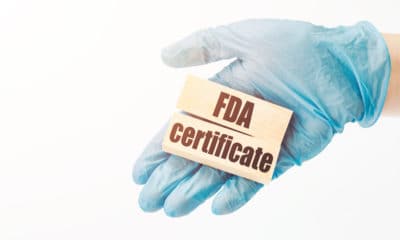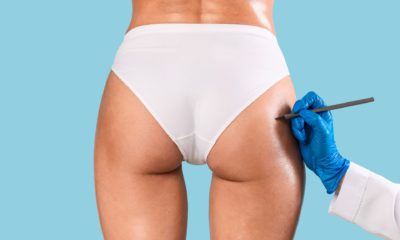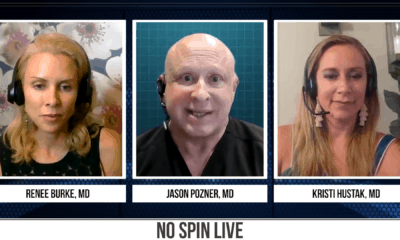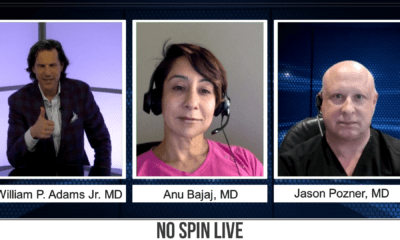A new technology is on the plastic surgery market aimed at eliminating the need to fill tissue expanders via a needle. The AeroForm Tissue Expander is an all-in-one tissue expander that contains a canister of co2 for patient-operated expansion.
While somewhat of a niche, tissue expanders in breast reconstruction are important, and their expansion phases can be bothersome to patients. “Sometimes when we do breast reconstruction, we expand the breast with an expander,” shares board certified plastic surgeon Dr. William P. Adams Jr. of Dallas. “Typically you inject that with saline through a transcutaneous needle stick.” Instead of patients having to return to their physician’s office to receive an “injection” of saline into the expanders, the AeroForm device allows them to have their expanders expand without needles at the push of a button.
On the latest episode of No Spin Live, board certified plastic surgeons discuss the new device and whether or not it will prove useful in breast augmentation.
Game-Changer or Marketing-Driven?
On it’s face, the AeroForm device sounds like an attractive, updated version of the tissue expansion process. If a product can be placed once via surgery and expand at will without injections of saline, who wouldn’t want that?
“It sounds like a good idea to me, but especially for those patients who don’t live near the doctor doing the reconstruction, it sounds like a great option for those patients,” shares board certified plastic surgeon Dr. Jason Pozner of Boca Raton, Florida.
While the physical act of expanding tissue expanders seems to be well-covered and improved by AeroForm, there is one component missing from the described situation that is very important. Patients who return to their physician to receive a saline injection aren’t just there for the expanders. The surgeon is able to take a look at the situation, adjust the hypothesized amount of saline, and really just make sure that everything is OK. If patients begin using the AeroForm device and thus no longer require as frequent of office visits, it may negatively impact the process.
“I think it’s a good idea in practice for the remotely located patient,” explains Dr. Jason Cooper, also a board certified plastic surgeon in Florida. “I think it needs to be qualified with it’s always really important to see the doctor during the expansion phase. When patients are at home sort of experimenting with expansion once a day, twice a day, or three times a day, things can arise. I think it’s really important to have a connection with your plastic surgeon during that time period so they can monitor you and they can insure your safety and the best outcome.”
How Big of a Deal is It?
One questioned posed to the panel is how much of an issue are the old tissue expanders. Are patients routinely annoyed and/or frustrated by the process to the point that an AeroForm device needs to be created and made available on the market?
“[Patients have] never complained about it because they’ve never had a choice! Anytime you can avoid getting stuck, I think that’s a good thing,” says Dr. Kevin Smith, a board certified plastic surgeon in Charlotte. “This is a neat device, it’s something that allows the patient to expand themselves. But, it’s really important that they be supervised in doing so.”
One aspect of the AeroForm system that could potentially make it technically superior is patients not receiving multiple injections. Yes, the benefit has already been discussed, but on a surgical level, the less foreign objects are introduced into the body, the less likely a complication will arise. Because the AeroForm system does not require any injections of saline into the expanders following their initial placement, that lowers the risk of complications.
“The last thing that makes me lean towards thinking this device is neat: anytime we introduce a foreign object through the skin into an expander, there’s a risk of a deflation and infection,” explains Smith. “That can start the reconstruction all over again. Having a contained device that doesn’t have to be stuck with a needle may have an advantage.”
At the end of the day, tissue expander injections aren’t a huge operation, are mostly tolerated by patients, and successfully perform the task they’re required for. Whether or not AeroForm will make a dent in the already-established process is yet to be seen, but the technology seems sound and may be a useful tool in the right situations.

















Facebook
Twitter
Instagram
YouTube
RSS